Litter Pickup
February 8, 2017
Thanks to our employees who participated in our litter pickup session last Saturday. We appreciate your help with keeping Henrico Beautiful!
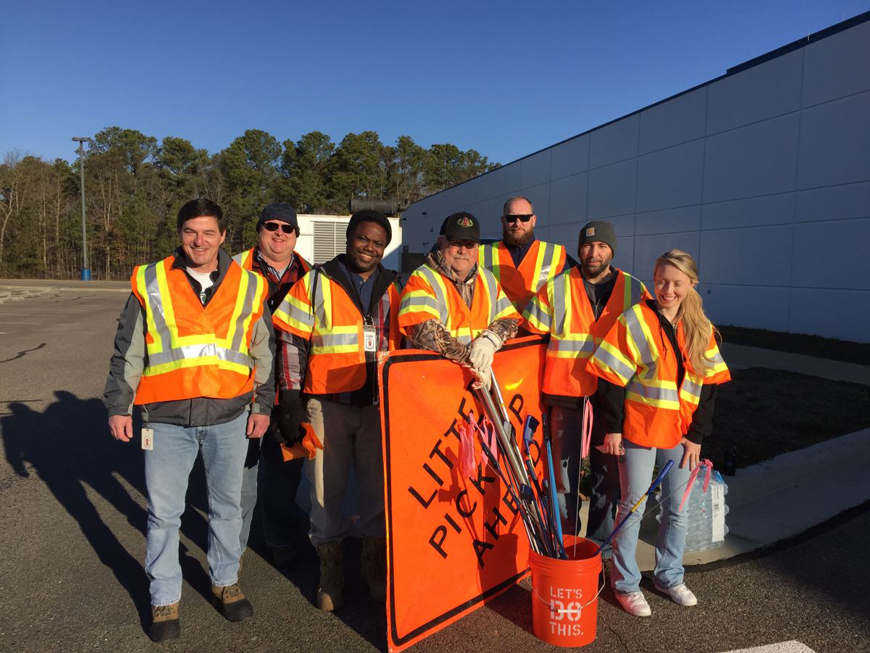
February 8, 2017

February 8, 2017
Over the years, the machine tools required by a machinist have evolved gradually and are generally utilized in the case of computerized numerical control (CNC) machines for milling and turning. These machines enable point-to-point precision and accuracy that is required for producing industry standard metal parts and equipments.
In this post, we will look at the different types of machine tools that a machinist is required to use to cut metal parts and components.
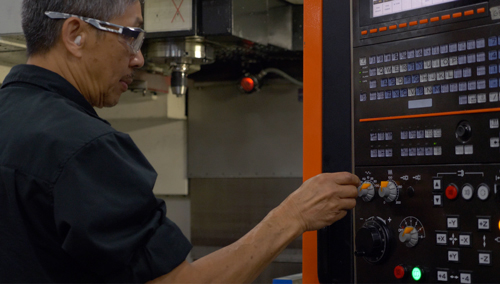
Out of all the tools required by a machinist, perhaps the most important one is a CNC milling and turning machine. These are computerized machines that are programmable via codes to ensure metals are cut with impeccable precision and quality standards. Used primarily in the manufacturing sector, a CNC machine can be configured to automate the cutting process using a wide variety of tools including waterjet cutter, router, lathes, grinders, and more.
This machine involves using a group of lathes for machining hard materials. In addition to machining metals, a metalworking lathe is also used for machining plastics and other materials. The types of lathes incorporated into the machine are varied. Some of these include engine lathe, bench lathe, and center lathes.
A machinist may also be required to use a shaper machine that works similar to a lathe machine with the main difference being that the cut performed is linear as opposed to helical. There are several different types of shapers including horizontal, universal, vertical, crank, hydraulic, and others. In the case of a vertical shaper, it is often attached to a rotary table to perform cutting on curved surfaces.
A drill press machine is another tool that comes in different sizes and shapes. In addition to drilling, a drill pres machine can also be sued for reaming, counterboring, and countersinking, as well as inserting small or large holes into metal objects.
Sources
https://en.wikipedia.org/wiki/Broaching_(metalworking)
https://en.wikipedia.org/wiki/Shaper
http://www.americanmachinetools.com/how_to_use_a_drill_press.htm
January 27, 2017
The process of milling is done through a milling machine or a mill. Before the advent of computing technology, milling was performed manually by hand or mechanically. Nowadays, it is conducted through computer numerical control milling machines.
These machines are known as machining centers and come in either horizontal or vertical orientation, depending upon the cutting tool spindle’s orientation. A machining center consists of tool magazines, carousels, automatic tool changing system, computer control, enclosures, and coolants. Milling has now been integrated with turning and vice versa to allow more flexibility and increase productivity.
Milling is similar to cutting and drilling and plays a vital role in the manufacturing industry. Whether it is an automobile, aircraft, mold, medical prosthetic, toy, household appliance, or a mobile phone, milling is present everywhere.
Unlike turning which uses a single-point cutting tool, milling utilizes a multi-point cutting tool to cut away material from the workpiece. It is also different from drilling where the cutting tool is moved along its axis of rotation; in milling, the cutter is moved in a direction that is perpendicular to its axis of rotation, so that the workpiece is cut along the circumference of the cutting tool.
In some cases, the workpiece is also moved along as the cutter cuts away. There are two types of milling:
In face milling, the cutter is used to create flat faces into the surface of the workpiece and the cutting is done at the ends of the cutter. Sometimes, it is also used to cut flat-bottomed cavities. In peripheral milling, the cutter cuts along its circumference; hence, the surface of the workpiece receives the shape of the cutter. It is generally used to make threads, gear teeth, and deep slots.
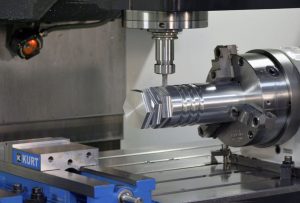
In the early days of manufacturing milling was done manually, but with the invention of computers and information technology, CNC milling machines became the best means of milling parts. The CNC milling machine is programmed using a programming language like G and M codes; these codes represent individual functions of the machine. When combined, they will result in an end product.
As soon as the file is sent to the mill, it executes the instructions and starts drilling and cutting, turning itself along the axes to shape and cut the material in the required form. CNC milling allows for more flexibility, higher precision and accuracy, and faster turnaround time.
Sources
https://www.worldskills.org/what/career/skills-explained/manufacturing-and-engineering-technology/cnc-milling/
http://www.thomasnet.com/about/cnc-milling-51276103.html
http://www.cs.cmu.edu/~rapidproto/students.03/dwm3/project2/process.html
http://www.cs.cmu.edu/~rapidproto/students.06/ibrown/CNC%20Mill/information.html
January 17, 2017
Turning is normally done on the exterior surface of the workpiece, but sometimes it is also carried out on the inside. At that point, the process is known as boring. Similarly, cutting faces on the external side of the workpiece while it is rotating is known as facing.
In the manufacturing sector, the importance of turning is paramount. This is because engineers have to build complex designs which would not be possible without the process of turning. If you have ever inspected an assembly, you will understand why. In an assembly, there are literally thousands of parts interconnected with one another that also interact with each other to create a system. For example, an automobile can contain as many as 10,000 different parts.
All these parts are made of different types of materials and are of different sizes and shapes. Even the quality of the material varies with each part. All these parts are built by machinists using techniques like turning, casting, milling, welding, etc. Turning is carried out on a lathe machine.
As mentioned earlier, turning is done on a lathe machine. Being the oldest type of machine tool, a lathe machine is used to shape pieces of wood, metal, plastic, etc. During the process of turning, the workpiece which is usually rigid and made of either metal, wood, stone or plastic is rotated, while a cutting tool is moved along the workpiece in 3 different axes of motion in order to generate accurate depths and diameters.
There are four types of turning; profiling, straight turning, external grooving, and taper turning. These processes produce different types of shapes from a single workpiece like conical, curved, grooved or straight.
Turning can be done in either of two ways; manually or through the use of a computer. In the older days, turning was done by hand and the operator had to constantly monitor the process. It was time-consuming and inaccurate. With advancements in electronics and information technology, the use of computer-numerical control (CNC) became widespread and machines equipped with microcomputers were and are being used to conduct turning.
In CNC turning, a computer program is written by the operator with all the necessary dimensions and variables and the file is transmitted to the lathe machine. Using stepper motors to control the cutting tool, the machine automatically yields the best results. It is highly accurate, flexible, and quicker than doing it manually.
Sources
https://www.worldskills.org/what/career/skills-explained/manufacturing-and-engineering-technology/cnc-turning/
http://www.slideshare.net/APM_Longmont/what-is-cnc-turning
http://custommachining.ickler.com/blog/whats-the-difference-between-cnc-milling-and-cnc-turning
http://www.mnbprecision.com/what-is-cnc-turning/
December 19, 2016
Numerical control refers to using an algorithm or computer program to control a machine tool. In other words, a set of instructions containing numbers, symbols, and letters is used to program the machine to perform a certain task. Numerical control machines were invented in the 1940s and 1950s. Although electronics was still in its infancy, motors were utilized to guide the machine through a set of dots on a punched tape. Later on, digital computers were implemented. This gave rise to the modern CNC machine. CNC stands for computer numerical control.
A CNC machine consists of a microcomputer such as a microcontroller or a programmable logic controller (PLC), fitted on the machine itself, and programmed with a set of instructions to carry out the specified task.
The main difference between a numerical control machine and a computer numerical control machine is that numerical control involves the use of punch cards, whereas in computer numerical control, a computer is used. CNC machines store the program in their memory unit.
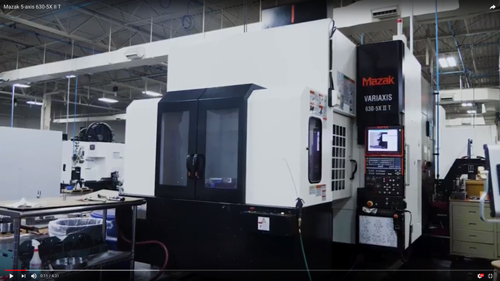
CNC machines offer greater benefits over a traditional NC or numerical control machines. They are more flexible as they can be easily reprogrammed by a computer programmer to match the new job. Furthermore, they are cost-effective and much faster owing to the blazing speeds of modern computer processors. They also have more storage capacity and are highly accurate.
CNC machines work exactly like robots; in fact, they are robots because they are automated and robots are controlled by computers as well. When the program or set of instructions are written to meet the requirements of the task such as cutting metal, the computer executes the commands and performs the task at hand. CNC machines work with drilling machines, lathe machines, turning machines, and milling machines.
Machining tasks like cutting metal parts to shape them require highly skilled operators; that can be expensive. On the other hand, CNC machines don’t need many people to run them. It just needs an operator who can write and load the program into the machine and fit it with the appropriate tools. After that, the machine takes over as the task is completely automated.
Sources
http://www.brighthubengineering.com/manufacturing-technology/55787-what-is-the-cnc-machine-how-cnc-machine-works/
http://www.thomasnet.com/about/cnc-machining-45330503.html
http://wings.buffalo.edu/academic/department/eng/mae/courses/460-564/Course-Notes/CNC%20notes.pdf
http://www.technologystudent.com/cam/cnccut1.html
December 8, 2016
Machining is done on metallic parts as well as plastic, ceramic, wood, and various composites. A person who performs machining it is called a machinist. Different types of hand tools, cutting tools, power tools, and machine tools are used in a machine shop. It can be done as a hobby, business or both. A machine shop can be a separate shop or a part of a large factory where manufacturing takes place.
The end product of a machine shop is a part which can be made of metal, plastic, wood, ceramic, etc. The parts are then sold to other manufacturing industries such as the automotive industry, aircraft industry, power generation industry, or shipbuilding industry.
A machine shop typically consists of the following types of equipment for producing parts.
Machine shops often also contain the raw materials required for manufacturing the specific part, such as bar stocks. It also stores an inventory of the parts that have been finished.
Setting up a machine shop is not easy. It requires a lot of capital as most of the machinery is expensive. Secondly, it requires skilled workers, especially if you are running a shop that specializes in repairing the components of engines, for example.
You might be imagining hundreds of workers laboriously working in a machine shop; well, the picture is somewhat accurate, but it doesn’t really hold true in modern times. Modern machine shops do not have masses of workers; many of the processes are automated and controlled by computers like robotics, microcontrollers, microprocessors, and PLCs. An example is the CNC machine commonly used in a machine shop.
 Before the Industrial Revolution of the 19th century, parts were manufactured in small cities, towns, and villages in local workshops. Then when factories began to spring up, most of the machines were constructed onsite. Before long, factories established their own machine shops.
Before the Industrial Revolution of the 19th century, parts were manufactured in small cities, towns, and villages in local workshops. Then when factories began to spring up, most of the machines were constructed onsite. Before long, factories established their own machine shops.
Up till the early part of the 20th century, machine shops were powered by mechanical belts driven by steam engines. Later, electric motors took over. With the development of electronics, machine shops became automated with the introduction of numerical control. As computer technology advanced, it was integrated with the machine tools used in a machine shop and eventually, computer-aided design and manufacturing became popular.
Sources
http://www.practicalmachinist.com/vb/general/ot-what-does-small-machine-shop-actually-do-243051/
http://www.wisegeek.com/what-is-a-machine-shop.htm
http://www.me.berkeley.edu/services/student-machine-shop
http://www.dictionary.com/browse/machine-shop
November 4, 2016
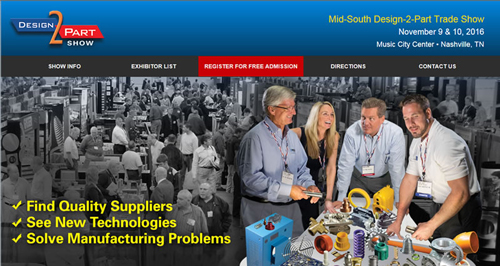 Come see us at the Nashville Design2Part show on November 9-10, 2016.
Come see us at the Nashville Design2Part show on November 9-10, 2016.
“Attending Trade Shows is one of my favorite parts of the job”, says Mark Hayman, Director of New Business Development. Exhibiting at trade shows is an excellent opportunity for us on the sales team to show what Kosmo can do. In addition to showing what we can do, attending trade shows also helps us to keep up with the latest technology.
Bring us your machining challenges. We can offer solutions and develop relationships with the most demanding customers. Send your inquiries to: Kosmo@KosmoMachine.com
September 10, 2016
Kosmo is proud to partner with the National Tooling and Machining Association (NTMA) and the Virginia Department of Labor to provide career growth for those who can meet the challenge. Great Job guys – Thank you!
The tradition continues as three more employees have made the commitment to complete the program.
September 3, 2016
Kosmo Machine Inc. will be holding a job fair at our location on Thursday, Sept. 8th, 2016 from 9AM-4PM. We are seeking to recruit experienced CNC Machinists with Mill and/or Lathe experience. Please note that qualified applicants must have Mill and/or Lathe experience in order to be considered.
We are recruiting for 1st and 2nd shifts. We offer medical/dental, Short Term Disability, Life Insurance, 401K, Tuition Reimbursement and weekly pay.
Come visit us at:
500 Trampton Road
Sandston, VA 23150